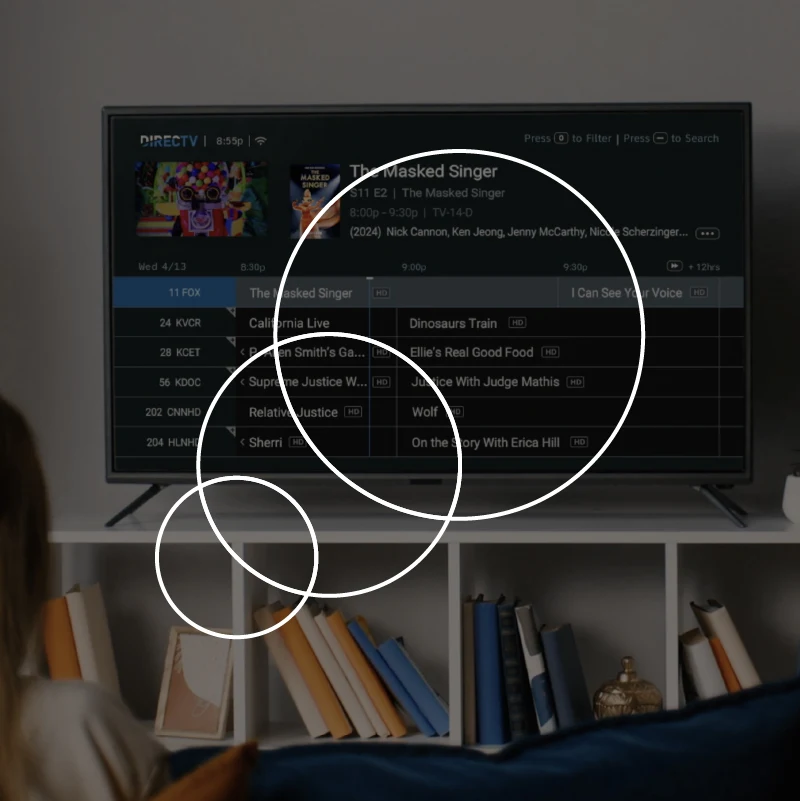
Linear TV is About to Go the Way of Radio. That’s a Good Thing
A version of this article was originally featured in AdExchanger
Holding companies are ruthless at prioritization. These massive organizations command so much of the world’s advertising budgets that they need to put resources behind the biggest markets while simultaneously seeking cost reductions in other areas. All of this is in service to the bottom line. So it should come as no surprise that cost reduction is coming for one of the biggest advertising channels ever: linear TV. In the next two years, linear will be de-prioritized so much that holding companies will begin shipping linear buying off to specialists, quietly exiting the game. That is all of linear TV, encompassing both broadcast and cable, large and small networks, local and national.
If that sounds far-fetched, then you haven’t been paying enough attention. This shift has already begun, driven by the rise of streaming TV and the drive for operational efficiency at the holdcos.
Streaming has officially dethroned linear
Linear TV is no longer the king of media; streaming has surpassed linear and continues to dominate viewing habits. In fact, consumer time spent watching linear has dropped from 72% in 2020 to 57% today. This year’s upfronts reflect that shift where linear TV is now an appendix to streaming buys. Every major media company has its own streaming platform with ad-supported tiers, and they are all staking their futures on these platforms. Even tentpole live sports - long considered linear’s last saving grace – are now being sold as bundled packages or separate DTC apps that require matching buys on streaming content as well.
The pendulum is only swinging one way. Linear is taking a backseat to streaming in terms of both advertiser interest and publisher priority. Holdcos are subsequently shifting focus, too. The most likely path forward for a holdco is to outsource it to specialists (and/or at best, keep it inhouse, deprioritized, and as a courtesy service to its clients).
The need to shed operational burden
For decades, linear TV was the bread and butter for holdco media agencies. This began changing about 20 years ago with the explosion of national cable channels, the growth of digital media, and, more recently, the rise of streaming.
The shift started with local linear. These types of media buys quickly became too much work at too high an operational expense for larger agencies and holding companies to make any margin on the buy. Outsourcing linear TV and making it a variable cost item (i.e. in line with volume or media traded) makes all the sense. The same already happened to some other once-critical channels like radio, which used to be a massive part of their business, and is now often considered an afterthought. And let’s not forget about print, which has seen its importance at the agency fade dramatically over the past 60 years.
National linear TV is about to go down the same path. Recent news of WideOrbit's decision to sunset its supply-side platform, Upzing, is the nail on the coffin. To date, WideOrbit has served as the backbone for agencies looking to keep linear execution within their walls. But with its shutdown - and the subsequent end of its demand-side platform, ZingX - one of the last major pieces of infrastructure supporting that model is gone.
Given the continued push for efficacy and the changing TV landscape, outsourcing isn’t optional, it’s inevitable.
Linear’s future lies in specialization
To be clear, linear isn’t dead. Far from it. While its importance may be shrinking it’s still a valuable channel for efficiently reaching audiences at scale, and doing it in a way that actually drives measurable outcomes.
For holding companies, there is limited profit and almost no room for growth. But where one door closes, another opens.
This is good for small agencies, business processing outsourcers, and tech companies that have automated linear execution. The same goes for the advertisers. Working with a smaller company that brings expertise and focus means that brands can continue to divert spend into a channel that tens of millions of consumers still watch, and they can do so at an efficient return on ad spend.
Outsourcing is simply what happens in the advertising industry when a channel is marginalized. We’ve already seen it with radio, print, and local linear. These channels represent too much work and not enough profit for the major holding companies.
Expect to see a plethora of newer agencies that will specialize in linear TV to handle the outsourcing from the holdcos. Linear is not going away, it's just changing hands.

Philip Inghelbrecht
I'm CEO at Tatari. I love getting things done.
Related
Why Independent Agencies Win (or Lose) on Infrastructure in Convergent TV
Independent agencies can win big with Convergent TV, but only if they can navigate the complexity. See how a unified platform simplifies execution, lowers costs, and helps turn infrastructure into a true advantage.
Read more
Why Linear TV Remains an Effective Advertising Strategy
In today's era of streaming TV, the enduring power of linear TV can easily be overlooked. While platforms like Netflix and Hulu dominate the market, traditional television continues to engage a vast and valuable audience.
Read more
Cutting Costs or Cutting Corners? Why Sacrificing Channel Expertise Can Lead To A Vicious Cycle Of Diminished Performance
See why consolidating external expertise to cut costs can lead to diminished performance, especially in high-investment channels like TV.
Read more


